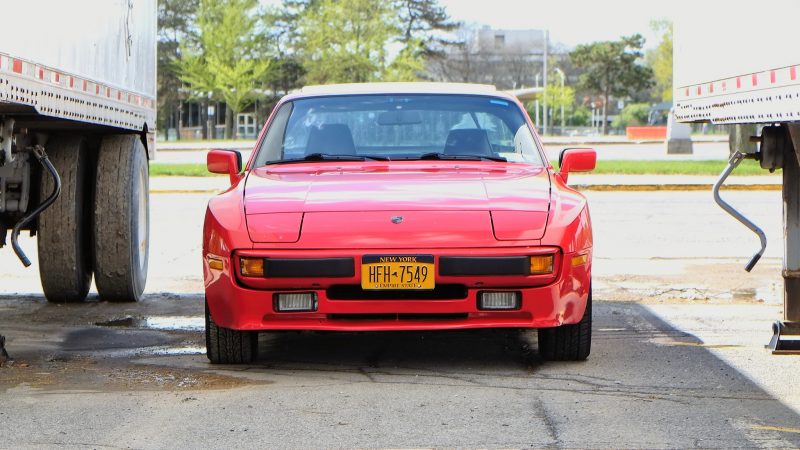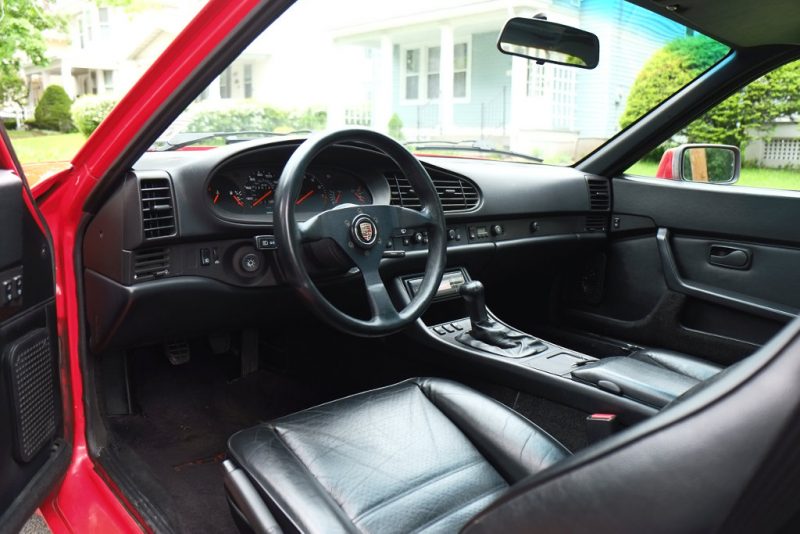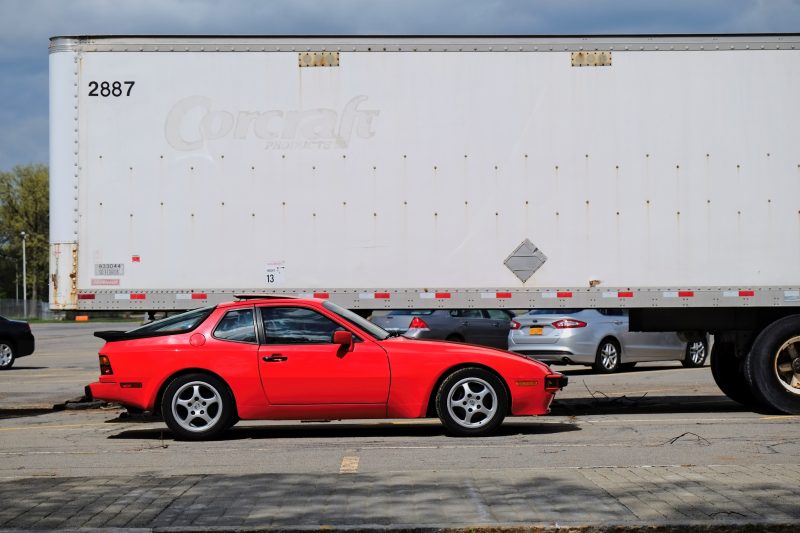Project Boxster Clubsport just wrapped up, it’s time to change our tune. I’d like to introduce our new project car, and I’ll be the first to point out that it is inconsistent with the very title of this site. It’s Porsche-powered, but it’s an all-aluminum 2.5L inline four, not a Flat Six. We didn’t seek this car out as a project car, and actually I had this particular car before I started writing for this site. I’ve enjoyed it thoroughly so far, but I have been wanting to take this car to the next level in terms of performance. In order to keep up with the latest in performance tires from our friends at Michelin, Project “944 GTS” is going to be host to quite a few updates to its suspension, brakes, and powertrain.

Presenting Project 944 GTS: In all its Impact-Bumpered Glory
Before we get started with this project in earnest, we need to thank Michelin. As many of you know, Michelin is a long-time sponsor of FLATSIXES.com. Recently, they have generously offered to sponsor Project 944 GTS as part of their involvement with our site. Please consider checking out what Michelin has to offer by clicking their banners on this page. Without Michelin’s support, and others like them, this site really wouldn’t be possible.
When the 944 debuted in 1983, it brought a Porsche-developed engine to the four cylinder transaxle cars for the first time. This 2.5L, 8-valve four would be the basis for all 944 and 968 engines to follow, and in various forms would sprout turbochargers and displacements up to 3.0l. Our new project car, a 1987 944S, is the unloved middle-child of the range. With 2.5L and 16 valves, the S delivered forty horsepower more than the base car, a seven thousand RPM redline, and a lower price of entry than the Turbo.

The only engine modification is visible above; a set of braided stainless fuel lines which replace the crack-prone stock rubber lines.
What’s Been Done
Though little-loved when it debuted, the sixteen valve four would find more fans in 3.0L form in the 944S2, and became Porsche’s first model with Variocam in the 968. I’ve had this 93k mile example for a little over a year now, and it is my three-season daily driver. The 944 has a reputation for unreliability, which seems to be more the fault of the cars’ low prices for the last twenty-plus years and resultant inattentive owners. This example has been incredibly reliable for me, however. The maintenance file which came with the car totaled a few times what I paid for it last year. The car has needed nothing beyond routine maintenance in the last year and eight thousand miles.
So, like any responsible 944 owner, I’ve addressed the timing belt, tensioners, water pump, and balance shaft belts. Though well maintained, the car had seen limited use over the last several years, and the now seven year old timing belt was an engine failure waiting to happen. The 944S, like the later 16v cars, features a single row timing chain under the valve cover which connects the two cams. The cam tensioner is prone to failure, largely due to the plastic guide rails wearing down over time causing timing chain breakage. A few weeks ago, I replaced that as well as I was beginning to hear some chain noise on cold startup.

Heck, even the dash is free of cracks.
Where We Stand
To date my 944 has done everything I’ve asked of it. It is comfortable, reliable, and though not as flickable as some of my past cars, has faultless handling. Currently everything works except the cigarette lighter, so we’ll be able to focus on improving the car, rather than spending a lot of time sorting out its faults. Aesthetically the car is not perfect, there is a thin spot on the left rear flare, some paint wear under the driver’s door sill, and some fading and oxidation in the Guards Red paint. Though I’ve done some paint correction, it’s unlikely it’ll ever look perfect without a repaint.
Apart from changing the wheels and the current Momo steering wheel, there won’t be many cosmetic changes. The 944 has never been subtle, with its big rubber spoiler and aggressive flares, and I have no desire to go full-on garish with this car.

What is a 944 GTS?
The 944 in virtually all of its forms, save this one if I’m honest, has been a popular platform for modification since its debut. My car already features a handful of upgrades(some of which I don’t care for), including a Momo steering wheel, forged 968 16″ alloys, and a freer flowing exhaust. My intention is to increase the performance of this S, without turning it into a harsh, track-only car. As I said, I use this car nearly every day. Like Project Boxster Clubsport, we plan to shed weight and increase grip, but I’d like to look at this project slightly differently than that one. While the Boxster is decidedly a sports car, the closed roof 944 is more of a junior GT car. A lot of space is dedicated to luggage, and thanks to its 21 gallon fuel tank the car has extremely long legs.
With that in mind, let’s consider this project in the vein of the current 911 GTS(did the title give it away?): Project 944 GTS will be a more performance oriented take on the 944S, but without taking the full plunge in to hardcore, GT3-style territory. Remember, this car has to stay every-day usable. I live in the Northeast where even the best roads resemble the surface of the moon. So while the suspension will be thoroughly upgraded, we won’t be using 500lb/in springs for peak track performance. The focus will be on improving roadholding and permitting a wide range of adjustability to take full advantage of modern performance tires, plus a few nods towards usability and safety without sacrificing performance.
Watch this space for our first update!
